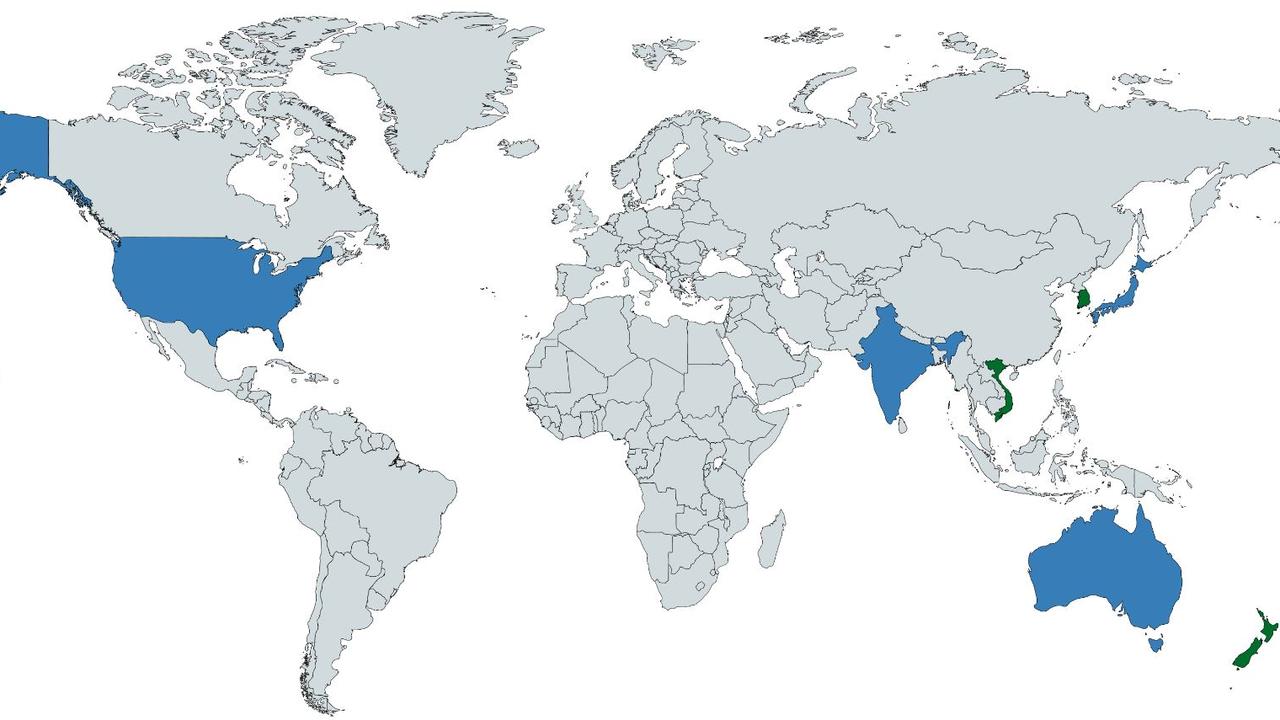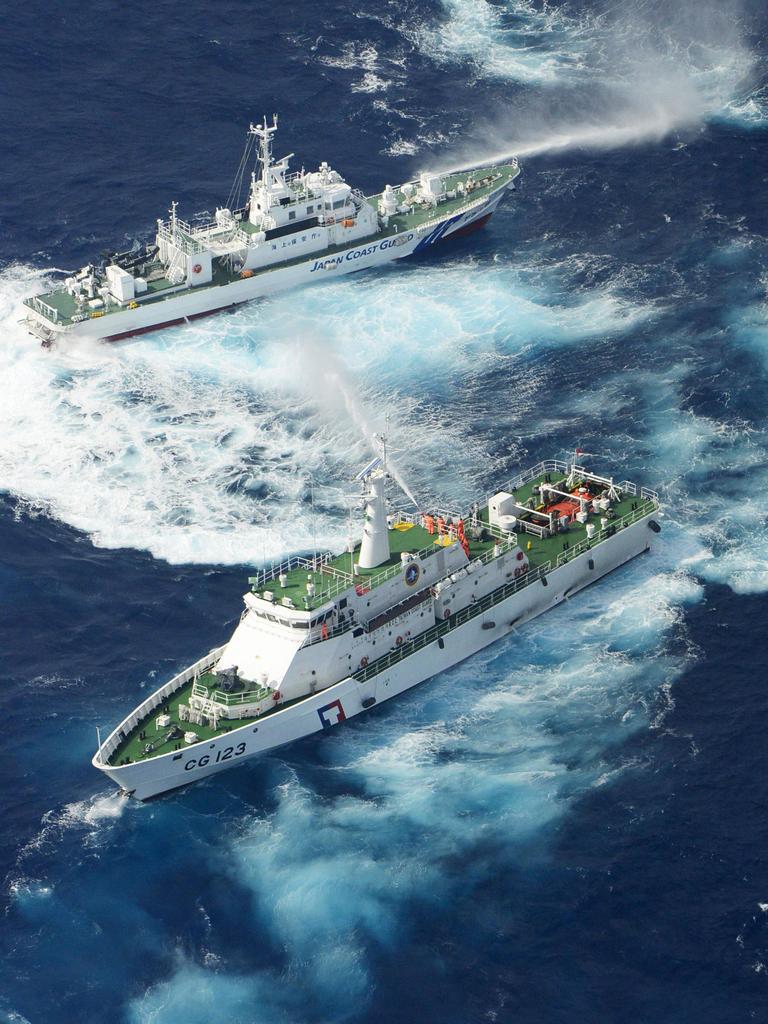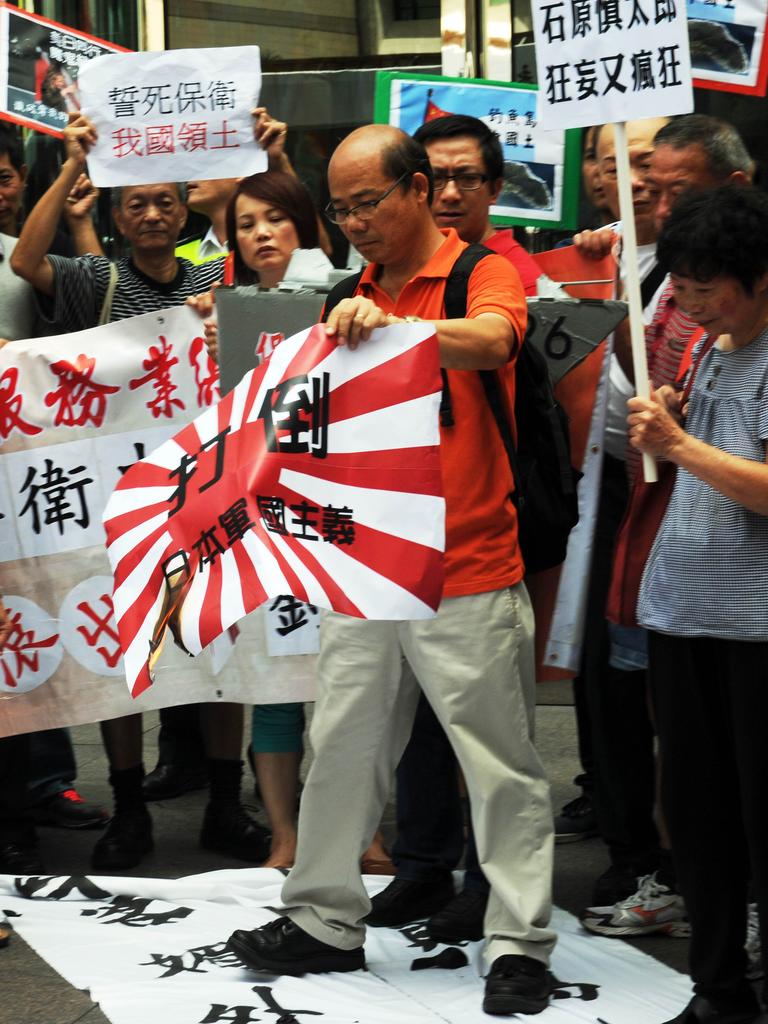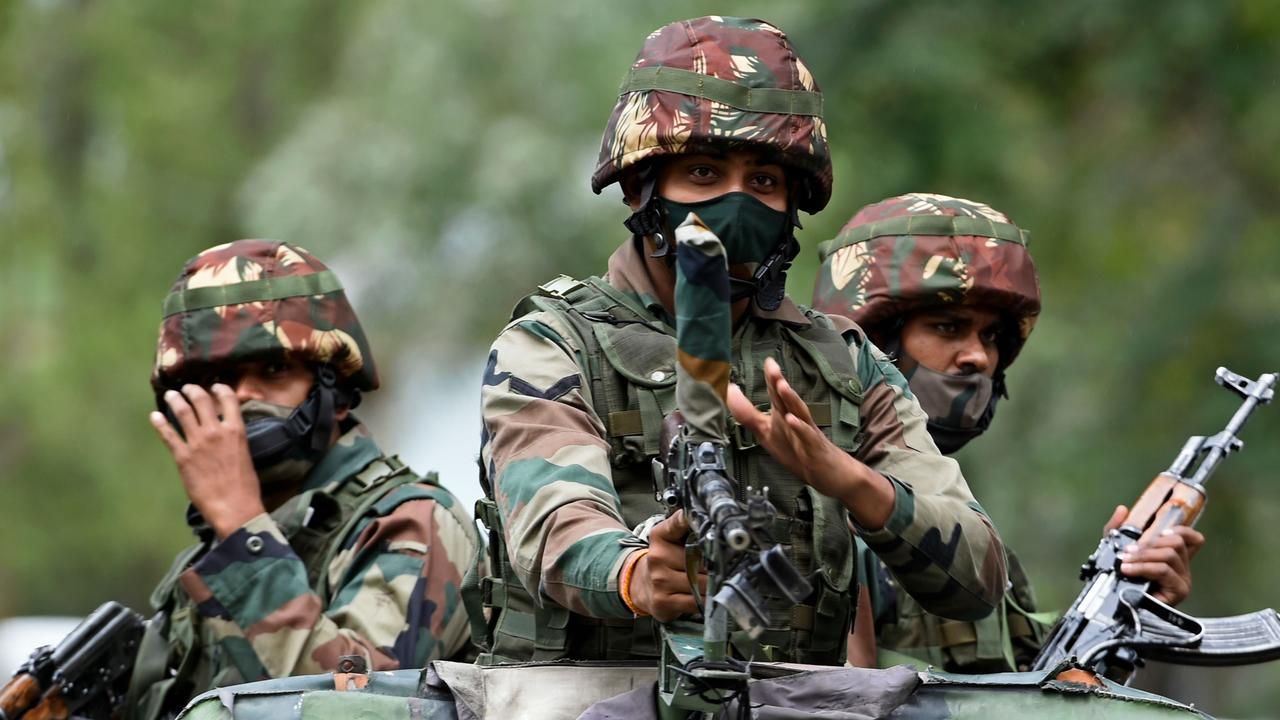Australia, US, Japan and India join forces to counter China
Four countries - including Australia - could form an alliance to combat the rising threat from China. But it could leave us open to an attack.
This year has seen the usually slowly shifting sands of the geopolitical landscape become a veritable sandstorm.
In the less than eight months since news of the COVID-19 pandemic first made global headlines, the landscape of Australia’s international trade and political relationships has been transformed.
Relations with China have deteriorated to the point where not a month goes by without some form of punitive trade action by Beijing against Australian exports. Meanwhile Australia has been invited by Japan and India to forge an economic pact to reduce the three countries’ reliance on China as part of their supply chains and to help grow their respective economies.
Ana a speech last week by US Deputy Secretary of State Stephen Biegun has indicated that the US State Department is hoping to form a NATO-style alliance for the Indo-Pacific region.
Under Mr Biegun’s proposal, the group would include Australia, India, Japan and the United States, with the prospective alliance dubbed ‘The Quad’.
RELATED: Secret plan to cut off China

“It is a reality that the Indo-Pacific region is actually lacking in strong multilateral structures. They don’t have anything of the fortitude of NATO, or the European Union,” Mr Biegun said.
“There is certainly an invitation there at some point to formalise a structure like this.”
Such an alliance would be an era-defining moment for the Indo-Pacific region and the world, potentially acting as a major roadblock to Beijing’s plan to expand its sphere of influence.
Mr Biegun also said it was the intention of the US to eventually invite New Zealand, South Korea and Vietnam into the alliance as well.
If this full vision of the alliance was realised, Beijing would find itself facing off against members across the Indo-Pacific region – from the Indian border with China high in the Himalayas in the West to the Korean Peninsula’s demilitarised zone (DMZ) in the east.
RELATED: Deadly clash in South China Sea

HEAVY ECONOMIC COST
But an alliance is not without its potential risks and drawbacks.
If Australia was to formally join such a group, whose main purpose is clearly to counter China’s ambitions, trade and diplomatic relations between Beijing and Canberra could further sour.
It’s likely Australia would increasingly find itself in Beijing’s crosshairs to have its economy targeted, with China potentially seeking even more alternatives to Australian produce.
With China currently consuming a record 48.8 per cent of all Australian exports, there could be an immediate and heavy economic cost to joining the alliance.
History teaches us that this type of alliance also carries a great deal of risk for its participants. Like the ‘Triple Alliance’ and ‘Triple Entente’ that dragged European powers into World War One, a relatively minor skirmish could trigger a sequence of events that could see Australia going to war.
For this reason, the criteria to join NATO, makes it virtually impossible for a nation with an existing territorial dispute to become a member of the alliance. This precaution thereby intends to eliminate the possibility that NATO could be drawn into an existing conflict, potentially dragging the entire alliance into war.
In the case of the proposed Quad alliance, both Japan and India have existing territorial disputes with China.
The Senkaku Islands are controlled by Japan; however both China and Taiwan dispute that status and claim the territory, which they call the Diaoyu Islands, is theirs.
RELATED: China’s ‘carrier killer’ warning to US


International politics expert Professor Chris Hughes from Warwick University regards the territorial dispute over Senkaku/Diaoyu Islands as “the most serious for Sino-Japanese relations in the post-war period in terms of the risk of militarised conflict”.
INDIA-CHINA CONFLICT
Along the more than 3400km frontier between India and China, the vast majority of the border between the two nations is currently disputed. In recent months, the border in the Ladakh region has seen a number of skirmishes between Indian and Chinese troops which remain ongoing, with some turning deadly.
Amid the rising tensions between Beijing and New Delhi, both sides are increasingly deploying military resources to the area and fortifying their positions near the border.
With the very real possibility of the conflict escalating beyond skirmishes between infantry on the frontier, the Indian government recently made a deal with Moscow to buy 21 second-hand MIG-29 fighter jets, to supplement the strength of its air force.
RELATED: India-China border tensions flare up

IMPACT ON AUSTRALIA
In potentially joining the alliance, there are risks and opportunities for Australia.
On one hand, joining an alliance that encompasses three out of the five largest global economies and has the most powerful naval force in the world could help guarantee Australia’s security for decades to come.
On the other, there is the possibility of being drawn into a war with Beijing over India or Japan’s existing territorial disputes with China.
For well over a decade, federal governments from both the major parties have insisted that there was no need for Australia to choose between its trade relationship with China and its security ties with the US.
Alliances generally take years to forge, as negotiators from all sides seek to ensure their interests are secured and their concerns addressed. But with the world continuing to rapidly change in the wake of the coronavirus pandemic, the day when Australia is forced to choose may be closer than many thought.
How talks for this potential alliance may unfold in the coming months and years remains a mystery. But with rising anti-China sentiment in Washington and throughout the region, a time may one day come when Australia is asked by its allies, are you in or are you out?
Tarric Brooker is a freelance journalist and social commentator | @AvidCommentator



